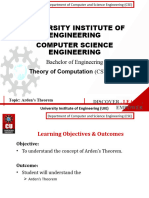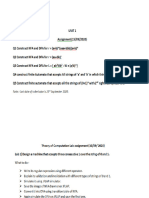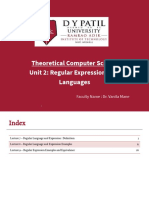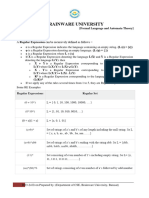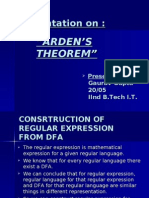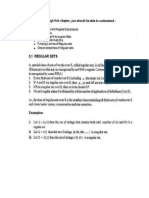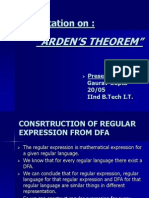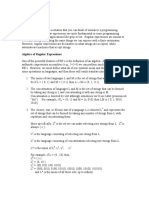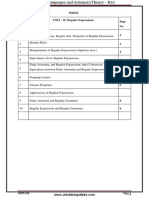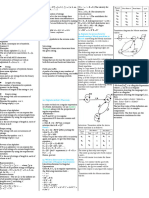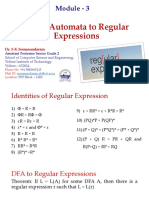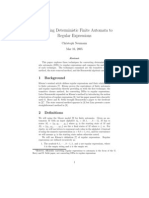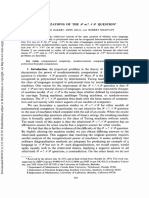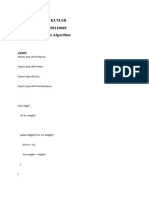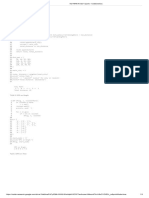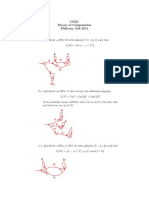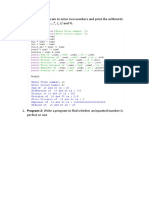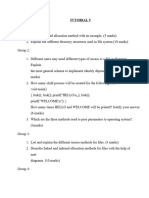0% found this document useful (0 votes)
44 views10 pagesAlgebraic Method Using Ardens Theorem Report File
This project report by Neha Singh discusses Arden's Theorem, which is essential in converting finite automata to regular expressions. It outlines the algebraic method for solving regular expression equations, highlights its advantages and applications in compiler design and formal language processing, and addresses its limitations. The report emphasizes the theorem's significance in automata theory while acknowledging challenges in its application to complex languages.
Uploaded by
rajputananya238Copyright
© © All Rights Reserved
We take content rights seriously. If you suspect this is your content, claim it here.
Available Formats
Download as PDF, TXT or read online on Scribd
0% found this document useful (0 votes)
44 views10 pagesAlgebraic Method Using Ardens Theorem Report File
This project report by Neha Singh discusses Arden's Theorem, which is essential in converting finite automata to regular expressions. It outlines the algebraic method for solving regular expression equations, highlights its advantages and applications in compiler design and formal language processing, and addresses its limitations. The report emphasizes the theorem's significance in automata theory while acknowledging challenges in its application to complex languages.
Uploaded by
rajputananya238Copyright
© © All Rights Reserved
We take content rights seriously. If you suspect this is your content, claim it here.
Available Formats
Download as PDF, TXT or read online on Scribd
/ 10




